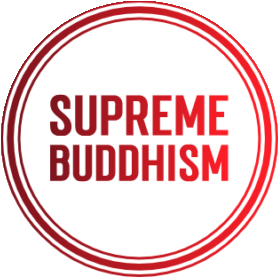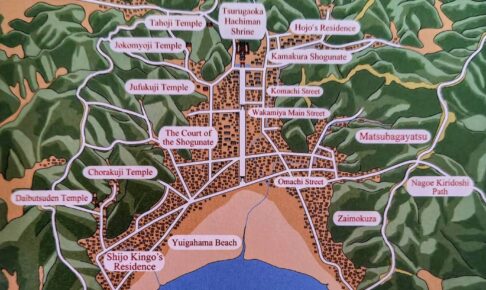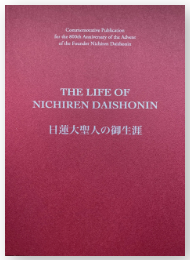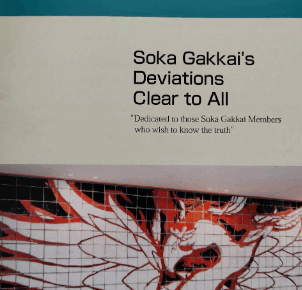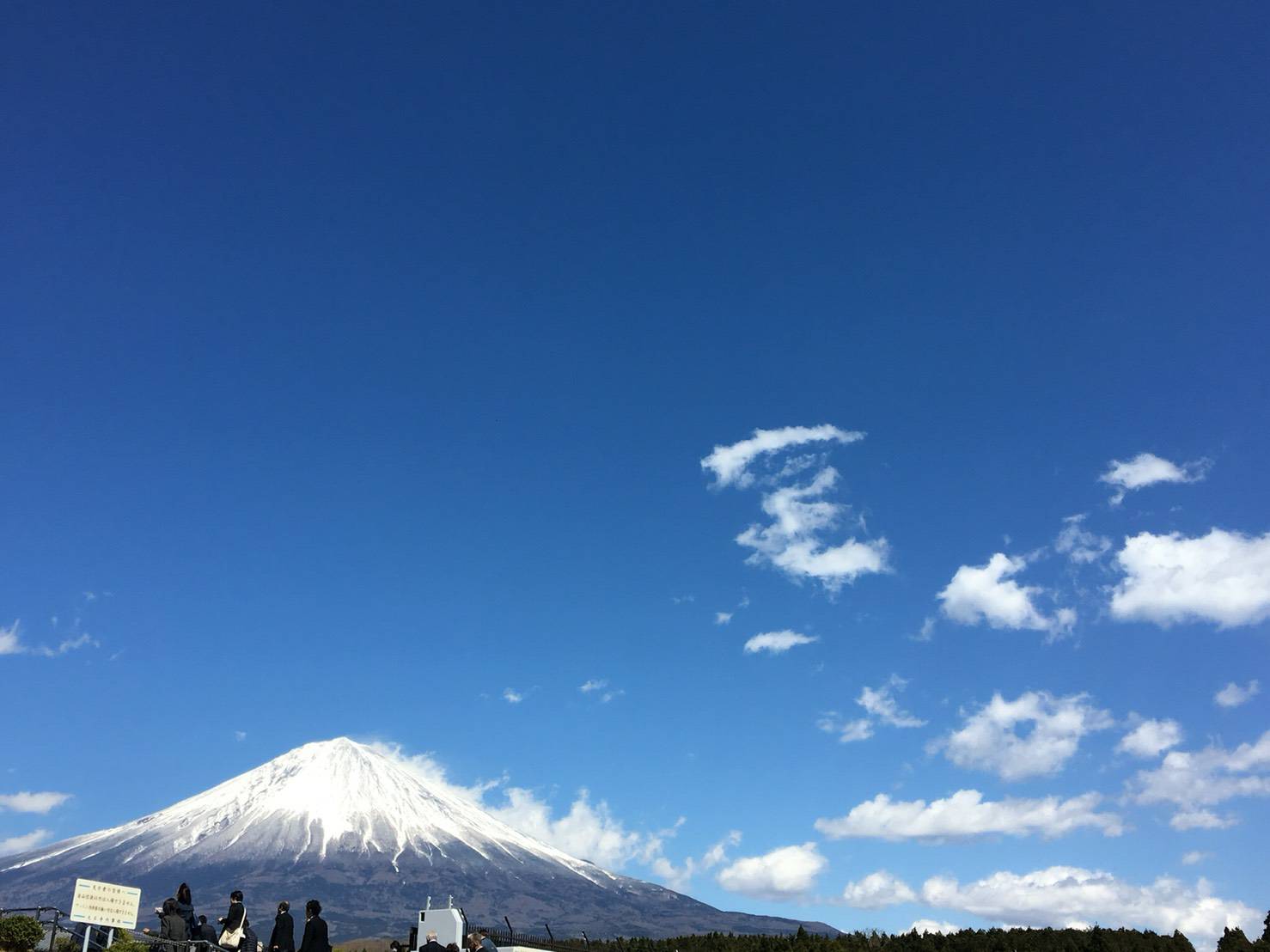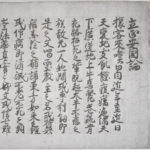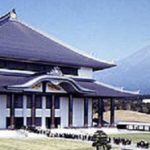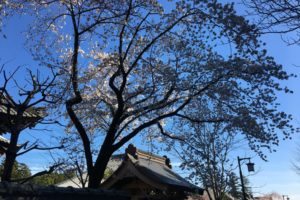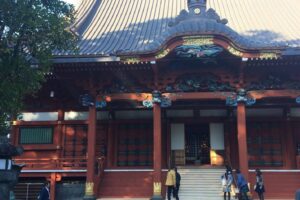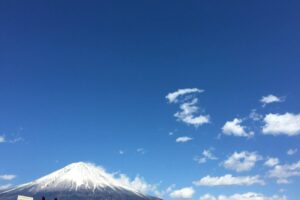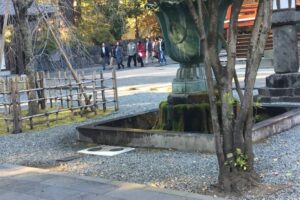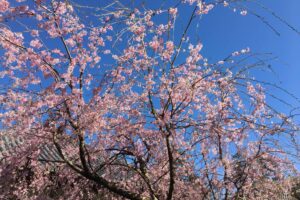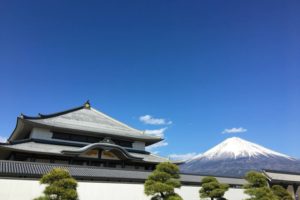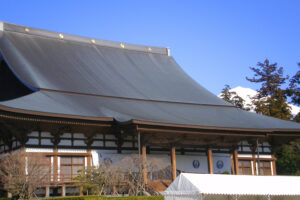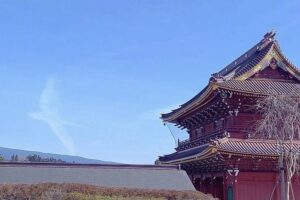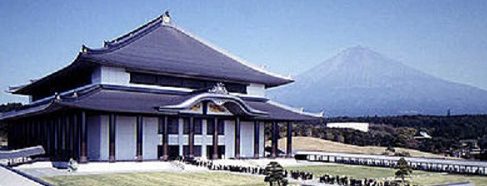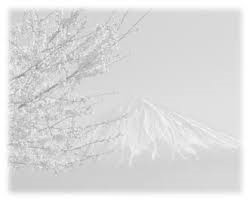The Fifth Level of the Fivefold Comparison
Contents
- The Transfer of the Law from Shakyamuni to Bodhisattva Jogyo
- What is Shudatsu Sotai?
- The Three Phases of Sowing, Maturing and Harvesting
- The Three Points Distinguishing the Buddhism of Sowing and the Buddhism of the Harvest
- The doctrine of “The Buddhism of Sowing is Superior to the Buddhism of the Harvest” is passed down correctly through the Succession of the Heritage of the Law (Kechimyaku)
- Conclusion
The Transfer of the Law from Shakyamuni to Bodhisattva Jogyo
After Shakyamuni expounded the Juryo (sixteenth) chapter of the Lotus Sutra, the core of the Honmon (Essential) Teaching, he transferred the fundamental Law of the Honmon Teaching to Jogyo. Bodhisattva Jogyo was entrusted with the salvation of the common mortals in the Latter Day of the Law.However, Shakyamuni only referred to the content of the Law as “the fundamental and essential teaching.” He did not reveal the true entity of this Law.
As predicted in the Lotus Sutra, the Daishonin appeared in the Latter Day of the Law as the reincarnation of Bodhisattva Jogyo. He revealed the fundamental Law as Nam- Myoho-Renge-Kyo. The Daishonin appeared in the form of a common mortal just like us. However, regarding His true identity, Twenty-sixth High Priest, Nichikan Shonin stated in “The Meaning Hidden in the Depths” (Montei Hichin Sho):
The true status is the Buddha of Absolute Freedom, the transient manifestation is Bodh isattva Jogyo, and the revelation of the True identity is the True Buddha,Nichiren (Six Volume Writing, p. 49) .
The basis of the origin of Buddhism is the doctrine of the Daishonin’s profound realization of the ultimate Truth in the infinite past of Kuon ganjo.We revere and honor Him as the True Buddha.
What is Shudatsu Sotai?
The Daishonin states in the “True Object of Worship” as follows:
The Honmon Teaching of the Lotus Sutra and True Buddhism are both pure teach- ings that lead directly to Buddhahood .However, Shakyamuni’s is the Buddhism of the Harvest, and this is the Buddhism of Sowing. (Gosho, p. 656; Ref .: MW-1, p.72)
The phrase, “…are both pure teachings that lead directly to Buddhahood “signifies that the Honmon Teaching of Shakyamuni and the Honmon Teaching that the Daishonin preaches in the Latter Day of the Law are both the pure and perfect Law.However, the Daishonin states” .. Shakyamuni’s is the Buddhism of the Harvest and this is the Buddhism of Sowing. “This means that the Honmon Teachings of Shakyamuni and the Daishonin are completely different in terms of the content and the true entity of the Law.The true entity of the Honmon Teaching of Shakyamuni is called” harvesting ” while the Daishonin’s Honmon Teaching is called “Sowing The explanation of the difference between these two is called the doctrine of Shudatu Sota,” The Buddhism of the Sowing 5supmor to the Buddhsm of the Harvest.
The Three Phases of Sowing, Maturing and Harvesting
First of all, I will explain the difference between “Sowing” and “Harvesting.” In Buddhism, the Buddha leads the common mortals to enlightenment through the process of the Three phases of sowing, maturing, and harvesting.
The Daishonin states in “Letter to Akimoto”:
The doctrine of the sowing of the seed and its maturing and harvesting is the very heart and core of the Lotus Sutra. (Gosho, p .1447; Ref .: MW-7, p.194)
The doctrine of Sowing, Maturing, and Harvesting was first taught in the Lotus Sutra.
The phase of “Sowing” means that the Buddha sowed the seed of enlightenment in the field (lives) of the people.
In “Admonitions against Slander” the Daishonin states:
The Lotus Sutra is like the seed, the Buddha like the sower and the people like the field. (Gosho, p.1040; Ref .: MW-1, p. 164)
The phase of “Maturing” means to nurture the seed that has been sown by watering and fertilizing.The seed of enlightenment will then grow and the capacity to receive and respond to the Buddha’s teaching will mature.
Finally, the phase of “Harvesting” means that the seed finally becomes mature and bears fruit: attaining the Buddha’s life condition (enlightenment) and entering nirvana. Among the three phases, the phase of sowing the seed of enlightenment is the most fundamental.
The Three Points Distinguishing the Buddhism of Sowing and the Buddhism of the Harvest
There are three main points to the principle of “The Buddhism of Sowing is superior to the Buddhism of the Harvest” (Shudatsu Sotai).
1. The Difference in the Capacity of the People to Receive and Respond to the Buddha’s Teaching
The people who received the Buddha’s teaching to lead them to enlightenment during Shakyamuni’s lifetime and the periods of the Former and Middle Days of the Law after Shakyamuni’s passing are called “those who possess good past causes” (Hon-i-uzen). The Buddha of kion had already sown the seed of enlightenment in their lives in the infinite past.
In the Juryo (sixteenth) chapter of the Lotus Sutra, Shakyamuni revealed that he had first achieved enlightenment in the remote past of Gohyaku-jintengo.He marked the time of Golyaku-jintengo as the original starting point of his teaching. Those who heard Shakyamuni’s teachings already possessed the seed of enlightenment The same is true of the people of the two thousand years of the Former and the Middle Days of the Law after Shakyamuni’s death.
After receiving the seed of enlightenment during the time of the Lotus Sutra sown in the infinite past by the Buddha of kuon. of kuon, those who nurtured the seed and earnestly practiced were able to reach enlightenment instantly.On the other hand, the people who were insincere or abandoned their faith halfway were not able to attain enlightenm ent. They fell into the evil paths of hell, hunger, animality, and so on.
When Shakyamuni made his advent in India, the people who had received the Buddha’s seed in the time of kuon, assembled at the place where Shakyamuni preached Through the expedient teachings, they gradually nurtured their seed of Buddhahood, and finally achieved enlightenment through the Lotus Sutra. Furthermore, during the two thousand years after Shakyamuni’s passing, the Lotus Sutra spread widely and brought tremendous benefit.
Nichikan Shonin states in “The Threefold Secret Teaching” (Sanju-hiden-sho):
Realizing the seed of Buddhahood is called enlightenment. (Six Volume Writing, p. 19)
During the Former Day of the Law, the people “possessing good past causes” (Hon-i-uzen)awakened to the Law of sowing through the Lotus Sutra and received the benefits from the Buddha.
However,the common mortals of the Latter Day of the Law are called,”those without good past causes”(Hon-mi-uzen). They do not posses the seed of enlightenment based on a karmic relationship with the Buddha of kuon.
In the “Letter to Soya”, the Daishonin states:
Now in the Latter Day of the Law, those who have a relationship with Shakyamuni have gradually disappeared, not a single one remains. (Gosho, p. 778)
In the provisional Mahayana teachings the people’s capacity corresponds to the phase of maturing. In the true Mahayana teaching the people’s capacity corresponds to the phase of harvesting.In this Gosho passage, the Daishonin indicates that those who have a karmic relationship with Shakyamuni’s teachings, and therefore have the capacities of matuuring and harvesting, do not exist in the Latter Day of the Law.
No matter how much the soil is watered, if no seeds have been sown, nothing will grow and bloom. Likewise, the people in the Latter Day of the Law will gain no understanding though hearing the Lotus Sutra that Shakyamuni taught for the salvation Of those who are in the phase of harvesting.
Therefore, in the Latter Day of the Law, the seed of enlightenment must first be sown in the lives of the ordinary people through the Buddha’s teaching in order to lead them to enlightenment.
2. The Difference between the Buddhas who Preach the Law
There is a difference between Shakyamuni and the Daishonin, the True Buddha in the Latter Day of the Law from the standpoint of their circumstances and positions.Shakyamuni is the Buddha of Harvesting, who leads to enlightenment the people who already have a karmic relationship with him.The Daishonin is the Buddha of Sowing, who leads to enlightenment the common mortals of Mappo through sowing the seed of Buddhahood.
The purpose of all Buddhas is to lead the people To enlightenment.These Buddhas appear in various forms according to the peoples’ capacity and ability to respond to the Buddha’s teachings.
Buddhas such as Shakyamuni, who lead the people to enlightenment through the phases of Maturing and Harvesting, appear with thirty-two distinguishing features. This type of Buddha is called “a Buddha of magnificent adornment.”
The people of the Former Day of the Law had, in past existences, quit their Buddhist practice halfway and fallen into the evil paths.If Shakyamuni Buddha had made his advent with a simple, physical appearance, the people would have shown him no respect and would have ignored his teachings.Thus, the Buddha appeared with the most respectworthy physical characteristics in order to draw the attention of the people. They were deeply impressed with his and listened carefully to the Buddha’s teach-appearance ings. They were able to attain enlightenment through awakening to the Nam-Myoho- Renge-Kyo that is hidden in depths of the Honmon Teaching of the Lotus Sutra.
Contrary to this, the True Buddha of Sowing made His advent with the appearance of a common mortal, just like us, and grew up as a common priest.He did not appear as a shining, golden Buddha like Shakyamuni.Twenty-sixth High Priest, Nichikan Shonin states in “Commentary on the True Object of Worship”:
The reason why the Buddha of Sowing leads the people of Hon-mi-uzen is due to their reverse relationship with Him.Even though haughtiness arises in their minds when they look at the Buddha, there is no disadvantage of destroying good karma because of the benefit of establishing a rerelationship with the Law of Sowing. Rather, they gain the benefit of the reverse relation (Fuji Shugaku Yoshu 4, p.279)
This means that even though the common mortals of Hon-mi-uzen (without past good causes) are not able to sincerely believe in the True Law, the Buddha of Sowing, just as He is, plants the true and original seed of enlightenment.Even though the people are not able to believe in the Law of the Buddha, through receiving the seed of enlightenment from Him they will receive the benefit of reverse relaxationship.This is the reason why the True Buddha of Sowing appears as an ordinary person, without adorning His body with a magnificent golden hue.
In the Gosho, Sanze Shobutsu Sokanmon Sho, the Daishonin states:
At the beginning of Gohyaku-jintengo, I realized that my body was composed of the five clements of earth, water, fire, wind, and space (ku), and I instantly achieved enlightenment. (Gosho, p.1419 )
The Buddha of Sowing is the Buddha who achieved the realization of the True Law, Nam- Myoho-Renge-Kyo, which restrict the universe.He instantly achieved enlightenment as a common mortal in the infinite past of Kuon-ganjo, the fundamental point in Buddhism that far precedes the time of Gohyaku- jintengo.The Buddha sows the seed of this Law into the lives of the common people, Therefore, there is no need for Him to adorn His body with gold.
3. The Difference in the True Entity of the Law
We, common mortals have many delusions and are unable to see the truth.There, we are not able to attain enlightenment through our own power.We must receive the teach- ing that leads us to enlightenment from the Buddha.This teaching has the power of the Buddha to save the people and the power of the Law.
The Buddha and the teaching are inseparable; they exist as one.Thus, the entity of the Law of Shakyamuni, the Buddha of the Harvest, and the entity of the Law of the Daishonin, the True Buddha of Sowing, differ accordingly.
The doctrine of “The Buddhism of Sowing is Superior to the Buddhism of the Harvest” is passed down correctly through the Succession of the Heritage of the Law (Kechimyaku)
Through His profound wisdom, the True Buddha, Nichiren Daishonin, made a clear distinction between the Law and the Buddha of Maturing and Harvesting and the Law and the Buddha of Sowing.However, the only one among His disciples who inherited th is doctrine was Nikko Shonin.
The followers of Nichiren Shu and other so called “Nichiren sects” do not understand the Daishonin’s profound doctrines and still worhip Shakyamuni Buddha, who is the Buddha of the Harvest.This is proof that without the Heritage of the Law, which has been passed down through the successive High Prists at Head Temple. Taisckip, it es impos sibde to correctly understand and transmit the Daishonin’s Buddhism
Conclusion
The Daishonin states in “The True Object of Worship”:
They maintain that their doctrines are incomparably profound, although nowhere do they clarify when the Buddha planted the seed of Buddhahood, or when he nurtuured and reaped it. These doctrines are no different from Hinayana which demands that one reduce his body to ashes and annihilate his consciousness,. (Gosho, p. 1447; Ref .: MW-1, p.70)
Though the teaching might be profound, if it does not reveal the process of attaining enlightenment through Sowing, Maturing, and Harvesting, it is no different than Hinayana Buddhism and non-Buddhist teachings.It cannot lead people to the ultimate goal of Buddhism, attaining enlightenment.In “Letter to Akimoto” the Daishonin states:
All the Buddhas of the three existences and the ten directions have invariably attain Buddhahood through the seeds represented by the five characters of Myoho-Renge-Kyo. (Gosho, p.1447; Ref: MW-7, p. 195)
Nam-Myoho-Renge-Kyo is the fundamental seed and the source root of the various Buddhas who appear in the sutras.It is also the source of their teachings and practices.This signifies that common mortals, for the first time, can attain enlightenment through the seed of Nam-Myoho -Renge-Kyo.
The Daishonin, the True Buddha of Kuon ganjo revealed the fundamental seed of enlightenment as the Dai-Gohonzon of the High Sanctuary of True Buddhism. Now is the time to spread the Mystic Law of Sowing based on the Dai-Gohonzon. Let’s sow the seeds of enlightenment for the sake of the people all over world.
Having sincere faith in the Law of Sowing (Nam-Myoho-Renge-Kyo) and the Buddha of Sowing (Nichiren Daishonin) is the most important matter.We are living in the era of Sowing.The fundamental Law of enlightenment has been revealed to us right before our very eyes.Through our faith and practice we can sow the fundamental seed of enlightenment in our lives.Then through the instant manifestation of the benefit of Sowing, we can gain the great fortune of attaining enlightenment in our present form (Sokushin Jobutsu).
Simply stated, we must uphold our faith in the Gohonzon and do Gongyo and chant Daimoku everyday.
The Daishonin teaches in, “Establishing the Four Bodhisattvas as the Object of Worship “:
Those who call themselves my disciples and practice the Lotus Sutra should all practice as I do. (Gosho, p.1700; Ref .: MW- 3, p.298)
He also states in” One Hundred Six Articles “(Hyaku Rokka Sho)
